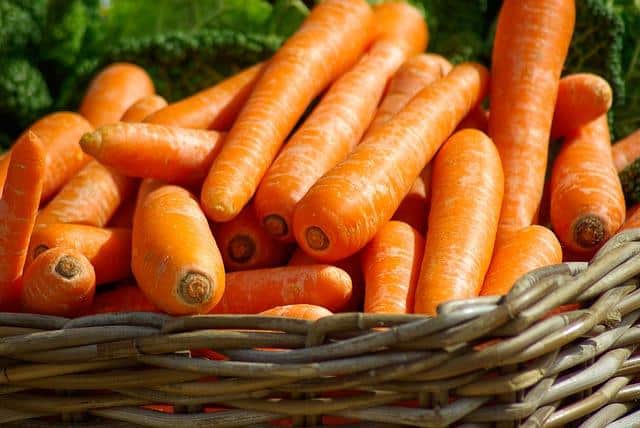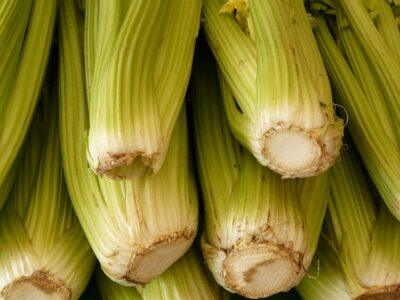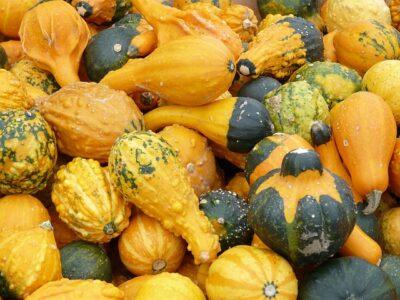Are you planning your spring and summer garden? This year, plan to make room for vegetables that will remain fresh for months after harvesting.
By making some simple choices, you can increase the amount of food you can store and decrease the amount of food you throw away because of spoilage. For example, spinach can wilt within days, but cabbage can stay fresh for months.
Here are some of the best vegetables you can plant for long-term storage as well as a few tips for keeping them at their best.
1. Beets – When stored in the fridge, beets can stay fresh for two to four months. Be sure to trim off the top greens before storage for best results.
2. Cabbage – Many lettuces do not last long after harvest, but cabbage can last up to two months in your refrigerator. Wrap it in plastic for best results.
Need The Best Non-GMO Seeds For Your Garden? Click Here!
3. Carrots – If you keep your carrots dry, then they will keep fresh in your refrigerator’s vegetable crisper for three to four weeks (or more). Avoid storing them in a plastic bag, since moisture can be retained in the bag, accelerating rotting.
4. Celery — Did you know you could keep celery fresh for two weeks in the refrigerator if you wrap it tightly in aluminum foil?
On the other hand, celeriac, the root of celery plants, likes moisture. You can store it wrapped in plastic on the bottom shelf of your refrigerator. Try placing your root in a dish of water on your kitchen windowsill, and it will regrow new celery stalks.
5. Garlic — Garlic bulbs will last for three to five months when stored in a cool, ventilated area. You also can store garlic in the fridge for months. Place it in a paper bag for best results. Keep in mind that refrigerated garlic will sprout within a few days of being brought to room temperature, so take out only what you need.
6. Onions – Onions are great for long-term storage. If you place them in a dry area that stays between 30 and 50 degrees, they can keep fresh for up to 12 months.
If you do not have a spot like that or if you need them in a handier location, you can store onions in a dark cabinet in a mesh bag for about a month.
7. Potatoes – If you have a basement or cellar that stays cool, consider storing your potatoes there. Potatoes will stay fresh for several months in a low-light area that keeps a temperature of about 40 degrees.
Keep your potatoes away from onions and applies; otherwise, your potatoes will ripen too fast and rot. Also, don’t store potatoes in the refrigerator. Refrigeration can change the color and taste of potatoes.
This New All-Natural Fertilizer Doubles Garden Production!
Sweet potatoes also prefer a cool, dark area. They will keep for about a month if stored in a loose bag.
8. Rutabaga –Rutabagas can stay fresh for up to a month in your refrigerator. Just as you do with celeriac, store them wrapped in plastic on a low shelf in your fridge.
9. Squash –– Pumpkins, butternut squash and other squash varieties, including pumpkin, will last between two and six months when stored in a dark, dry environment. A temperature in the low to mid-50s is ideal, and make sure there is some room between the vegetables for ventilation when they are stored.
In addition to planting more long-lasting veggies, it is a good idea to keep longevity in mind when you shop for groceries. According to research from the Natural Resources Defense Council, just 48 percent of the produce produced in the U.S. is actually eaten. The rest heads to the trash, where it ends up in landfills or compost piles. That food waste calculates to $2,275 each year for a family of four.
Here are some general basics to keep in mind for long-term storage:
- Dark, dry and well-ventilated areas work best.
- Storage bins should be sturdy and easy to wash and to dry.
- Wire bins can bruise fruits and veggies.
- Check on produce frequently so you can notice ripening or rotting right away.
- Avoid plastic bags for non-refrigerated food as they can retain moisture and accelerate rotting.
What vegetables would you add to this list? What are your best storage tips? Share your ideas in the section below:
Every Spring, Gardeners Make This Avoidable Mistake — But You Don’t Have To. Read More Here.
 Off The Grid News Better Ideas For Off The Grid Living
Off The Grid News Better Ideas For Off The Grid Living






